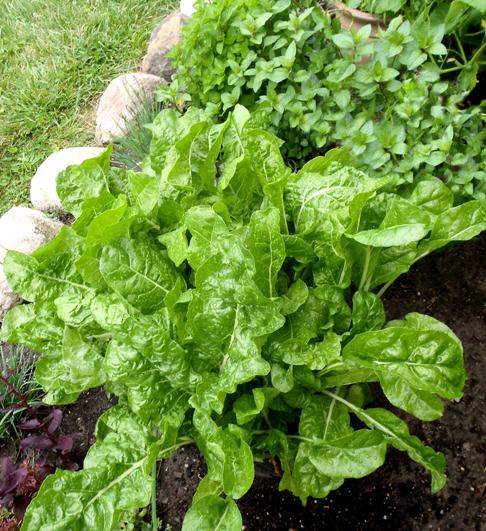We all know that garden crops like sunshine, but sometimes our available space has more shade than sun. My first attempt at growing vegetables in the shade was at our previous home. We had a basic city yard with about an 8 foot space between our house and the neighbors. It got only a couple of hours of sunshine and the rest of the time it was shaded. One year I decided to plant tomatoes, peppers, beans, and peas in that space and hope for the best. I already knew that tomatoes needed the most sun, so I planted them toward the front of the bed and everything else went further and further into the shade. That year was a bust and nothing did very well. My plants all grew really tall and and flopped over reaching for that small window of sunlight. I got very little food from that first garden and it was very discouraging. Later I learned that what I had in my yard was not partial shade, but rather deep shade. I decided forgo vegetables and instead plant hostas, ferns and ladies mantle, who of course all loved my shady site.
What I didn’t realize at the time was that I had chosen poorly, some crops actually can deal with lower light levels. The general rule is that plants grown for their stems, leaves or buds generally tolerate light shade. Those grown for their fruit and root crops need more sun.
Research
The crops listed below will grow with as little as three to six hours of sun per day, or constant dappled shade. Size and yield may be affected, but they will taste just as good.
Arugula, Brussels Sprouts, Cilantro, Collards, Coriander, Currants, Cress, Endive, Garlic, Gooseberries, Green onions, Kale, Lettuce, Mint, Mustard greens, Pak Choy, Parsley, Sorrel, Spinach, Tarragon and Thyme
Listed below are some fruit and root crops that will tolerate light shade, simply providing smaller yields.
Beans, Beets, Blackberries and raspberries, Broccoli, Cabbage, Carrots, Cauliflower, Kohlrabi, Peas, Potatoes, Radishes, Rhubarb, Strawberries, Sweet potatoes and yams, Swiss Chard as well as Turnips
Remember
- If trees or other plants are the source of your shade, garden plants may not only have to compete for light but also nutrients and water. Pruning nearby trees and bushes can increase sun exposure.
- Morning shade and afternoon shade are different. Some cool season vegetables may prefer morning sun and then shade during the hot summer afternoons. Areas with partial shade in the afternoon can actually extend the growing season for some cool season crops that are prone to bolting during higher heat, such as lettuce. (I have been planting my lettuce beneath the asparagus and it lasts a lot longer.)
- Finally, weed control is very important for shade crops that are already competing for nutrients and sunshine.





Thanks for this info! I will definitely refer back to this next year. I have a little shady spot that has been sitting untouched all year. Except for the weeds! The weeds love it!
This is very interesting and very informative! We all deal with shade to a certain degree.